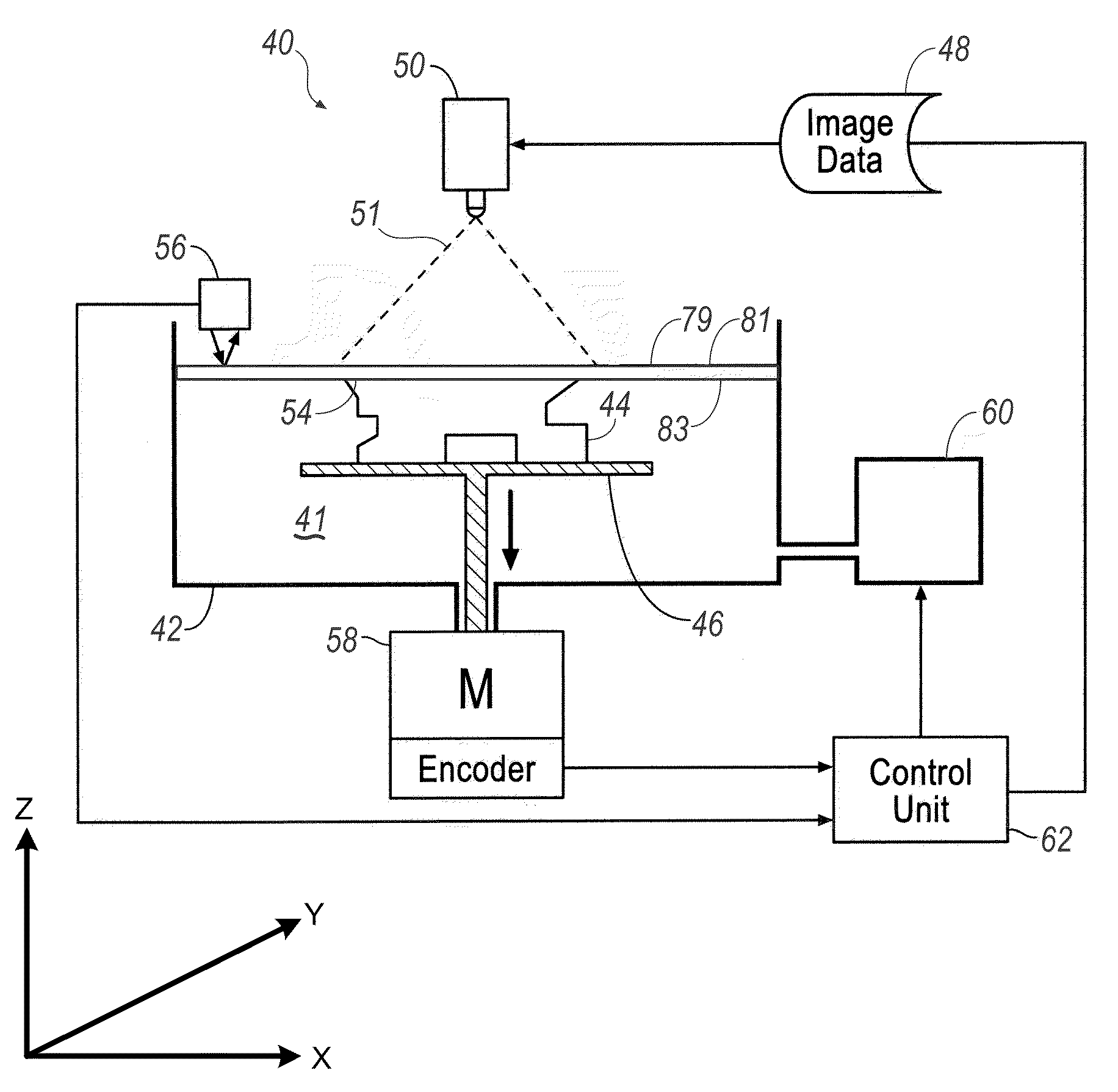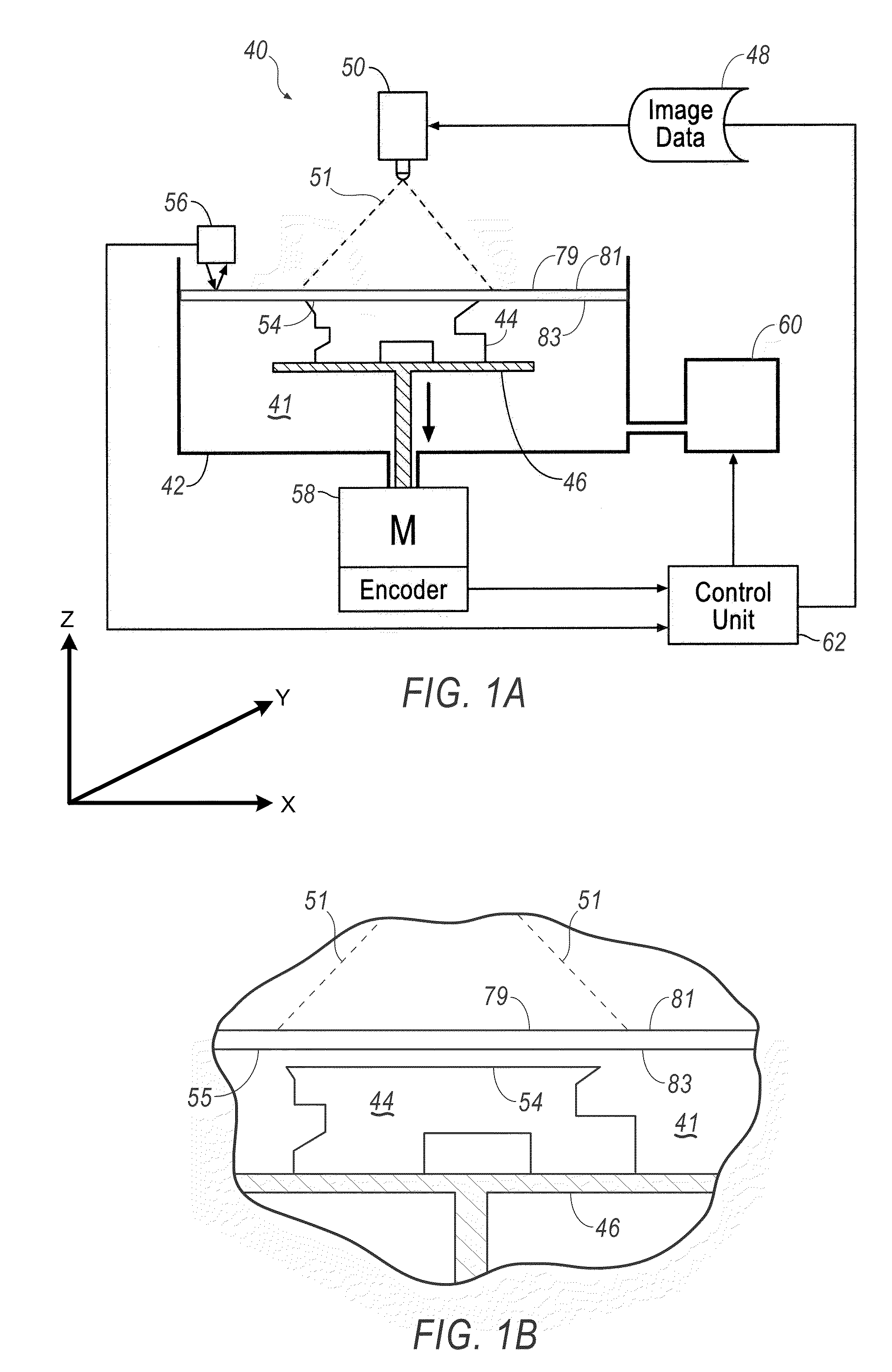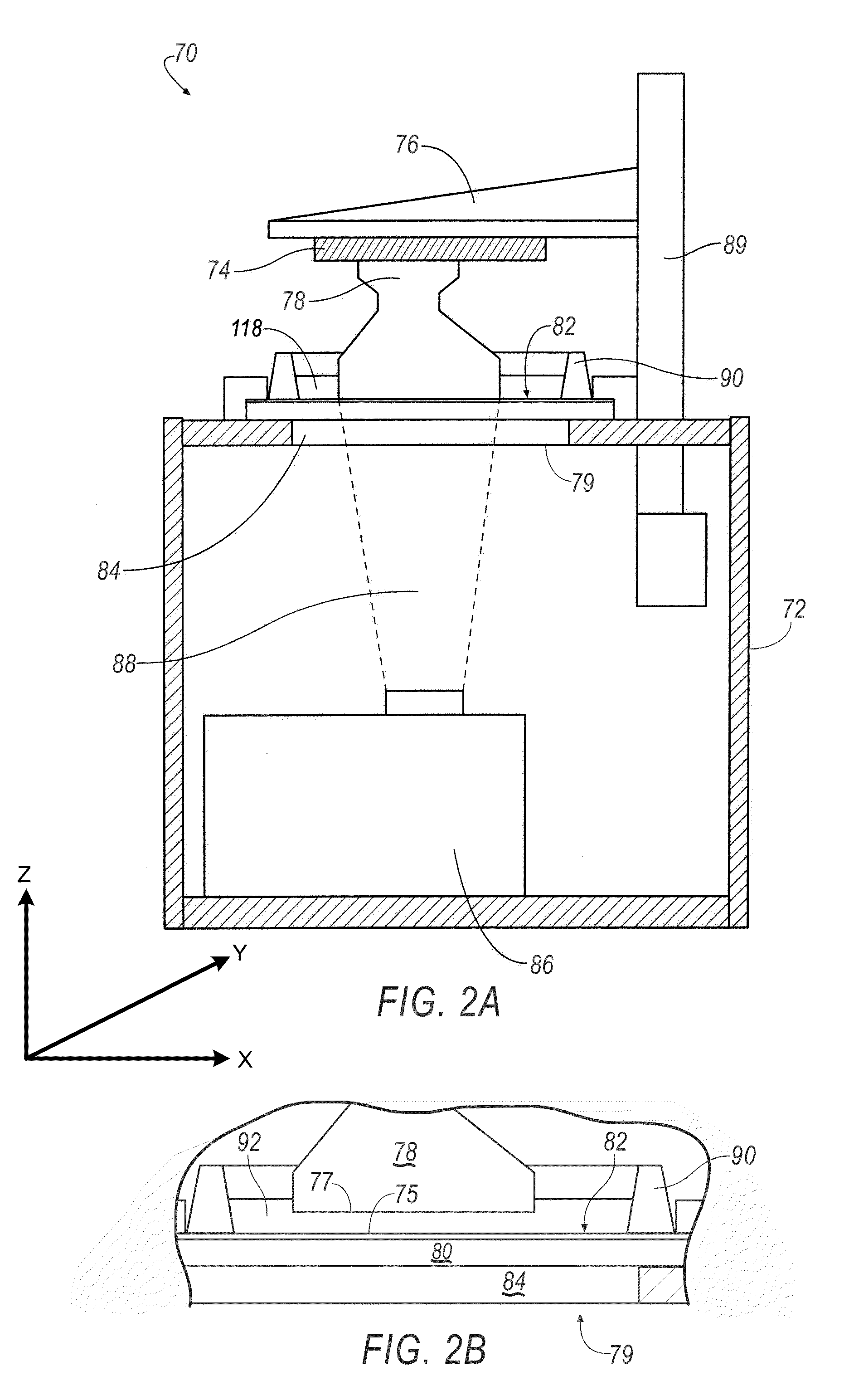Method of reducing the force required to separate a solidified object from a substrate
a technology of solidified objects and force, applied in the field of system and method of manufacturing three-dimensional objects, can solve the problems of adding moving parts, introducing undesirable complexity into the system, and causing the object to deform or break
- Summary
- Abstract
- Description
- Claims
- Application Information
AI Technical Summary
Problems solved by technology
Method used
Image
Examples
Embodiment Construction
[0043]The Figures illustrate examples of a system and method for manufacturing. Based on the foregoing, it is to be generally understood that the nomenclature used herein is simply for convenience and the terms used to describe the invention should be given the broadest meaning by one of ordinary skill in the art.
[0044]The system and methods described herein are generally applicable to additive manufacturing of three-dimensional objects, such as components or parts (discussed herein generally as objects), but may be used beyond that scope for alternative applications. The system and methods generally include a pattern generator that applies energy to solidify a solidifiable material in accordance with image data that corresponds to a three-dimensional object. In accordance with the method, different positions relative to an object build axis are solidified in multiple steps, during which the build platform on which the object is built is at different positions relative to the expose...
PUM
| Property | Measurement | Unit |
|---|---|---|
| Thickness | aaaaa | aaaaa |
| Volume | aaaaa | aaaaa |
| Depth | aaaaa | aaaaa |
Abstract
Description
Claims
Application Information
 Login to View More
Login to View More - R&D
- Intellectual Property
- Life Sciences
- Materials
- Tech Scout
- Unparalleled Data Quality
- Higher Quality Content
- 60% Fewer Hallucinations
Browse by: Latest US Patents, China's latest patents, Technical Efficacy Thesaurus, Application Domain, Technology Topic, Popular Technical Reports.
© 2025 PatSnap. All rights reserved.Legal|Privacy policy|Modern Slavery Act Transparency Statement|Sitemap|About US| Contact US: help@patsnap.com



